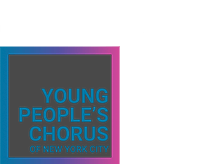[The New York Times] Encouraging Signs of Freshness at the Mostly Mozart Festival
Louis Langrée conducting the Mostly Mozart Festival Orchestra, with the soloist Kirill Gerstein at the piano. Credit Kevin Yatarola / The New York Times
Anthony Tommasini, The New York Times
Looking back, it’s clear that Jane Moss, the artistic director of Lincoln Center, made a smart move in appointing Louis Langrée as music director of the Mostly Mozart Festival in 2002. Almost immediately, working together, they reinvigorated what had become over several decades a calcified summer venture, dominated by too many listlessly played and predictable programs of staples by Mozart and his contemporaries.
The festival introduced several welcome innovations: creating a residency for the International Contemporary Ensemble, a crack new-music group; starting a popular series of late-night recitals at the intimate Kaplan Penthouse; even presenting ambitious opera productions, like the American stage premiere of George Benjamin’s wrenching “Written on Skin” in 2015.
Still, for all the fresh creative thinking, the concerts of the Mostly Mozart orchestra at David Geffen Hall remained, over all, timidly conventional. Mr. Langrée revitalized what had been a dispirited ensemble, and the performances he led were usually lively. But many programs still adhered frustratingly to the festival’s brand: Mostly Mozart.
This summer, however, in what could be a turning point, Mr. Langrée and Ms. Moss brought some of the festival’s newfound freshness to the orchestra’s programs. Two stand out in this regard.
The season, which ends on Sunday night, opened in July with a program titled “The Singing Heart,” a celebration of children as a source of wisdom and potential. In between movements of Mozart’s “Haffner” Symphony, conducted by Mr. Langrée, the inspiring Young People’s Chorus of New York City sang folk songs and spirituals. The concert ended with a rousing account of Beethoven’s jubilant “Choral Fantasy,” for piano, chorus and orchestra. The evening’s theme may have been a little lofty, and the program did not quite coalesce. Still, it was encouraging to see Mostly Mozart trying something so unusual for its gala opening.
Then in early August, So Percussion, a quartet of brilliant percussionists, joined the orchestra for the premiere of a new arrangement of David Lang’s “man made,” a percussion concerto. This bracing piece calls for the soloists to play all kinds of invented instruments, including wine bottles, twigs and trash cans. Mr. Langrée chose older works by Mozart and Lully that complemented Mr. Lang’s piece, scores that incorporate, for their time, exotic percussion instruments, including cymbals, triangle and tambourines to evoke Turkish locales.
Afterward, So Percussion reassembled at the Kaplan Penthouse for one of the popular “A Little Night Music” concerts, presenting an engrossing and entertaining program of wildly inventive pieces by John Cage, Caroline Shaw and Viet Cuong.
Almost all the artists who have appeared in the “A Little Night Music” series take advantage of the late hour, informal atmosphere and intimacy of the penthouse to offer thoughtful programs. On Aug. 12, the superb young Icelandic pianist Vikingur Olafsson gave an articulate, boldly expansive account of Bach’s complex Partita No. 6, followed by a selection of études by Philip Glass, works he has championed and recorded to acclaim. These pieces, which can easily come across as motoric and musically thin, sounded spacious and unpredictable in Mr. Olafsson’s riveting performances, interspersed with his informative spoken comments.
The previous night at the penthouse, the refined pianist Pedja Muzijevic presented a program that Mr. Langrée might look to as a template for enlivening the orchestra’s concerts. With the program “Haydn Dialogues,” Mr. Muzijevic alternated vibrant accounts of four Haydn sonatas with contemporary works by Jonathan Berger, George Crumb and Morton Feldman. Heard in the context Mr. Muzijevic devised, Feldman’s radical use of moments of silence in his moody “Two Intermissions” (1950) had surprising commonalities with Haydn’s humorous late Sonata in C, which often unfolds with impish pauses between phrases.
So, Mr. Langrée, how about a comparable “Mozart Dialogues” program or two with your orchestra next summer?
The last orchestra concert I took in, on Wednesday, might not look so bold on paper: The formidable pianist Kirill Gerstein was the soloist in Schumann’s Piano Concerto, and Mr. Langrée conducted Brahms’s First Symphony.
But this program was conceptually paired with Mr. Gerstein’s solo recital afterward at the penthouse. Lucky audience members who attended both were taken on an exploration of Brahms’s crucial involvement with both Robert and Clara Schumann. The orchestra concert actually began with Mr. Gerstein in a solo piece: Brahms’s quizzical, subtly complex Variations on a Theme by R. Schumann, written by the 21-year-old Brahms while Robert Schumann was confined to a mental asylum. Mr. Gerstein’s playing in the Schumann concerto was scintillating and impetuous. The Brahms symphony performance, though energetic, had some shaky patches.
At the penthouse Mr. Gerstein opened with two of Brahms’s late chorale preludes for organ (arranged for piano by Busoni), written in 1896, after the death of Clara Schumann, who survived her husband by 40 years and remained Brahms’s lifelong friend. Then Mr. Gerstein played Clara Schumann’s elegantly elaborate set of variations on the same theme by her husband that Brahms would later utilize (in the piece performed at the earlier orchestra concert — a great idea). The pianist ended with a revelatory account of Brahms’s feisty, craggy Sonata No. 2 in F-sharp minor, one of the works the 19-year-old Brahms showed the Schumanns when he first met them.
As an encore, Mr. Langrée, fresh from conducting the orchestra concert, joined Mr. Gerstein in one of Brahms’s Hungarian Dances for piano four-hands. It boded well for future artistic innovation at Mostly Mozart to see Mr. Langrée mixing it up with the inquisitive Mr. Gerstein.
